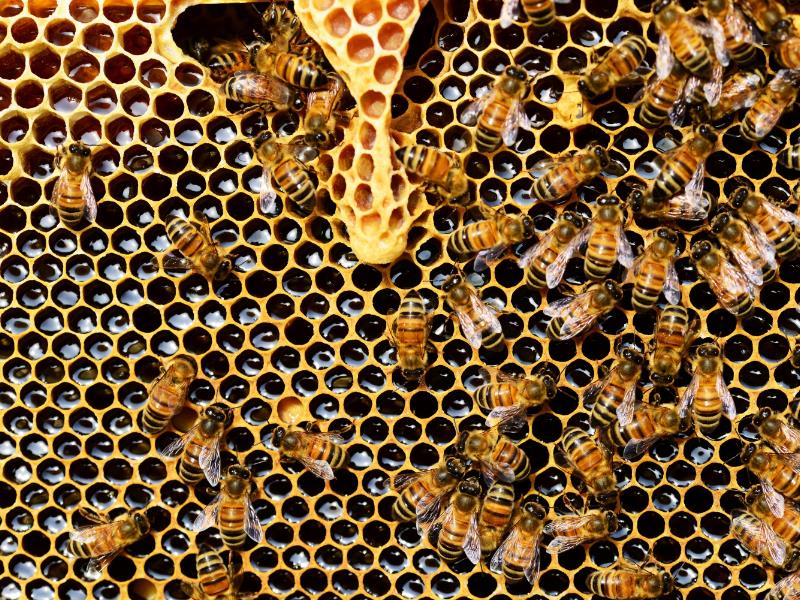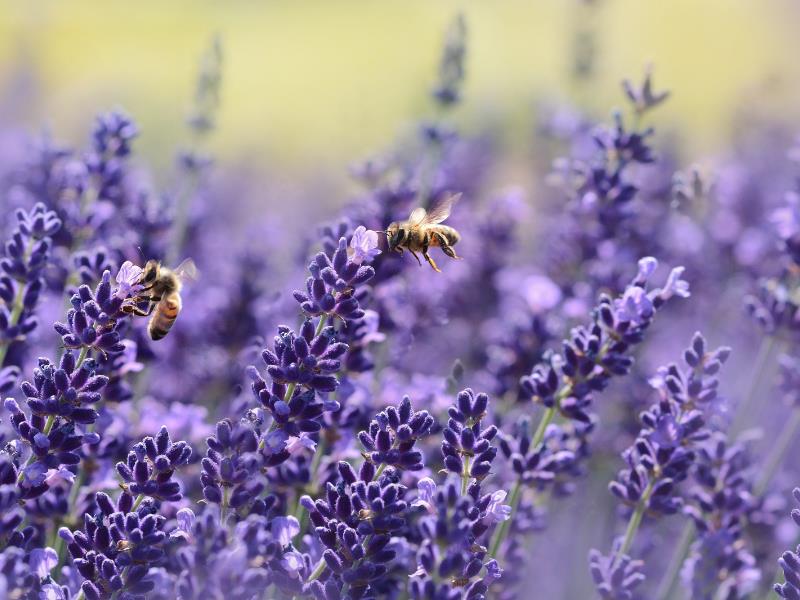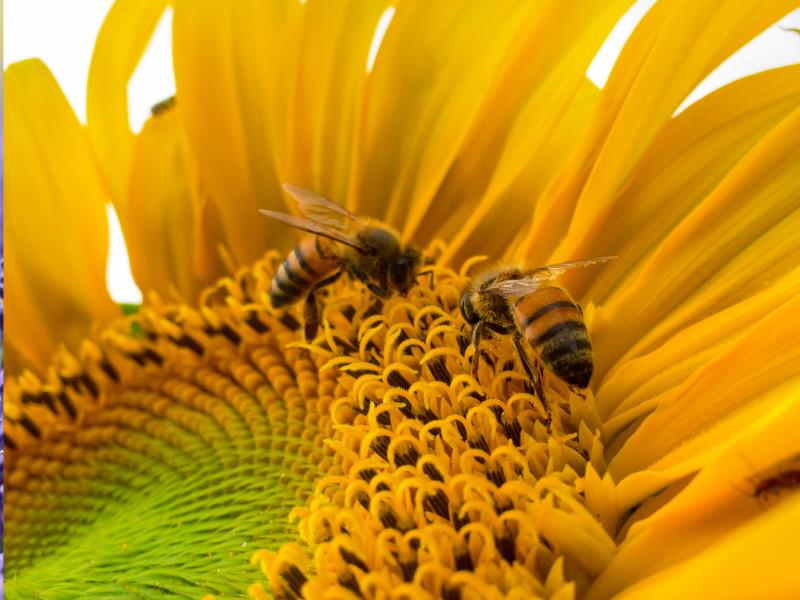What Is A Bee?
Bees are a member of the order Hymenoptera, thus placing it a group alongside ants, wasps, and sawflies. Across the globe, there are seven widely recognised biological families of bees, which, combined, cover a little more than 16,000 unique bee species. Much like many other insects, wherever bees can find food, water, and shelter, they can survive, which means that today, you’ll find bees around insect-pollinated flowering plants in every continent bar Antarctica.

Bees cluster around a honeycomb hive
What Do They Look Like?
Bees are primarily distinguished from ants and wasps not by their flight
capabilities or major evolutionary divulgences, such as long tongues or
pollen pouches, but instead rather by the presence of a soft, furry hair
on their body and a variety of minor anatomical differences, including
changes to their limb structure, hind wings, and forearms.
The head of a bee is largely consumed by a pair of large, compound eyes,
with a second set of three smaller simple eyes adorning the space
between the two bigger eyes. These secondary eyes are not used for
vision directly, but instead help the bee determine changes in the
intensity of light.
Beneath the eyes is a mouth, which is equipped with both a pair of mandibles for chewing and a proboscis for sucking up nectar from flowers. Above the eyes are a pair of antennae, and these antennae not only contain a joint part-way through, but they also contain a wide variety of sensory organs, granting the bee the ability to touch, smell, taste, and hear.
Finally, the thorax of the bee is split into three, with each segment containing a pair of independently-operable legs, and at the back of the thorax is a pair of wings. All corbiculate bees will have combs on their front legs with which to clean their antennae, while many other species of bees will have pollen baskets on their back legs which are designed to collect pollen via hairs that curve inwards. While the bee is flying, the wings are synchronised by a row of small hooks, allowing the bee to fly smoothly. At the rear of the bee is the abdomen, and of its nine segments, the final three will become the stinger, if the bee in question has evolved to have one.

A field of lavender provides pollen for 2 bees
When Are They Most Active?
While there is no time in the year where bees are entirely inactive, they will tend to violently swarm into action once winter crosses back into spring. When the weather warms up, the plants will begin to flower, providing bees with access to the nectar they seek. Additionally, the colder weather can cause harm to under-prepared or ill-equipped bee colonies, so most beekeepers won’t open their hives during the winter months, further decreasing bee activity in any given ecosystem. Generally speaking, most bees are active during the day and will rest at night, though there are some species of bees belonging to four of the seven families that are nocturnal, allowing them access to plants that don’t flower during the day, or that are otherwise guarded by dangerous predators that the bee cannot overcome.
How Do They Form New Nests?
The process of a bee forming a new colony is complicated, as there are multiple factors to consider. Bees can employ a haplodiploid breeding system, engage in eusociality, or may lead relatively isolated lives, either entirely on their own or within small colonies.
This creates a blend of species that can either revolve around a queen and a large swarm of worker bees that are of anatomically-diverse castes, or you may instead find a species that doesn’t construct large colonies and instead allows females to rear small broods in a nest she will have constructed herself.

Two bees crawl around a sunflower, collecting pollen
What Risk Do They Pose?
Bee stings are not particularly comfortable, as a bee will impart a large portion of venom as part of its sting. Fortunately, though, so long as you don’t suffer an allergy to any of the components of that venom, then it is highly unlikely to cause the average human serious, long-lasting harm, but it can still land you in hospital if you’re not careful. Instead, bees should be considered a massive benefit to any ecosystem they are present within, as they play an important role in the process of pollination of the vast majority of plant life.
Is There Anywhere In Particular They’re A Bigger Threat?
It is true that honeybees, amongst others, will die when they sting something, so it’s not something they’re likely to do often. Most bees will only sting someone when they present a threat to the colony or directly harm the bee, but if you’ve just happened upon a bee out in the wild, you’re most likely to be fine. Once you have been stung, recovering from the sting is as simple as removing the stinger and monitoring yourself for a day or two to make sure you don’t develop any serious symptoms.











